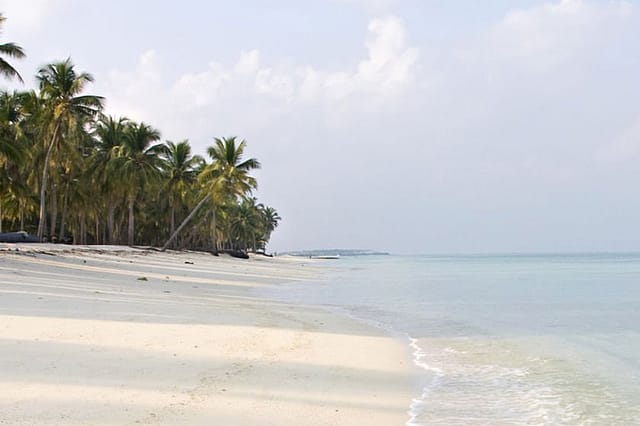Lakshadweep Calling

THE HOSTILITY OF the Maldives' present government to India and Prime Minister Narendra Modi's photo-filled sojourn in Lakshadweep have together brought a much-needed spotlight to India's tourism potential. And how it can finally be fulfilled. The islands of Lakshadweep are as beautiful as anywhere in Maldives. But they are not a convenient destination. A quick search of the possibilities of travel to Lakshadweep revealed that, for a start, one needs a permit to visit as per the Laccadive Minicoy and Amindivi Islands (Restrictions on Entry and Residence Rules), 1967. The rules run into 11 pages though the application can be made online. Then, there is only one flight from anywhere in India to Agatti, the capital city, Alliance Air from Kochi. And the list of hotels/resorts is very limited with no recognisable name/brand.
On the other hand, in Maldives, Indians get a free visa on arrival, there are plenty of cheap flights from a number of cities and hundreds of resorts in all budget categories. While planning a holiday, there is no comparison. Only the very determined will go to Lakshadweep. And for those who don't want to go to Maldives because of its latest hostility to India, there are Thailand and Malaysia, both of which have just introduced visa-free travel for Indian tourists to complement cheap flights and plentiful good hotels.
Few countries in the world, if any, can beat India on the range of tourism possibilities: nature, geography, history, and culture. But for tourism to thrive, these need to be supplemented by essentially five things, which are not found uniformly across India: cheap and fast connectivity (preferably air or high-speed rail and expressways); quality hotels across the star categories (especially three star and above); cheap and efficient local transport (not cartelised taxis as in Goa); safety (presence of a specialised tourist police in spots frequented by travellers); and curated, manicured tourist spots (clean, easy to navigate, containing quality shops/cafés).
What is not required is a Ministry of Tourism, either at the Centre or in states. Tourism promotion is not about policy or bureaucracy. Or about operating PSUs like the Indian Tourism Development Corporation or similar state-level corporations, which own and operate hotels of a low standard. It is about marketing/promotion and coordination/canvassing with government agencies and the private sector to put into place the five requirements to attract tourists, both foreign and Indian.
The way forward is for the government to create an agency along the lines of Invest India (which facilitates investment largely through coordination and knowledge dissemination). Like Invest India, Tourism India (or any other appropriate name) should be a public-private initiative. Invest India is 51 per cent owned by the three apex chambers of industry and 49 per cent by the Government of India. This enables it to function nimbly without the constraints of the government system while retaining access to key stakeholders in that government system whose support is required to successfully execute its mandate. Tourism India could be set up with the support of the same industry chambers or with relevant industry bodies of the tourism sector.
The marketing and promotion function would be the easiest for such an agency to execute. What is harder is the coordination required with relevant government ministries, such as civil aviation, railways, roads, and home affairs for the requisite infrastructure and security apparatus. A very important mandate would also be to negotiate with the Ministry of Culture, the Archaeological Survey of India,
and other state-level agencies responsible for monuments to allow private sector participation in upgrading the infrastructure
at these sites and also investing in preservation. The government simply doesn't have the resources to upgrade and manage all of the rich heritage across India. Then there is the task of reaching out to airlines. And to connect hotel companies with state governments and local authorities with the objective of facilitating investment and easing hurdles in places of tourist interest.
All of this is worthwhile because tourism can be a major contributor to economic growth and employment. Tourism contributes around 5 per cent of GDP in India, most of which is the contribution of domestic travellers. This can easily be doubled in quick time. The percentage contributed by foreign tourists, which averaged less than 1 per cent of GDP in the last two decades, can be trebled. The government has been progressive in its visa policies, enabling e-visas for a number of nationalities.
The competition for tourists is intense. Indian tourists are being aggressively courted by several countries, especially in the East Asian neighbourhood. So, India must
compete for not only foreign tourists but also its own travellers. A new approach is required.
